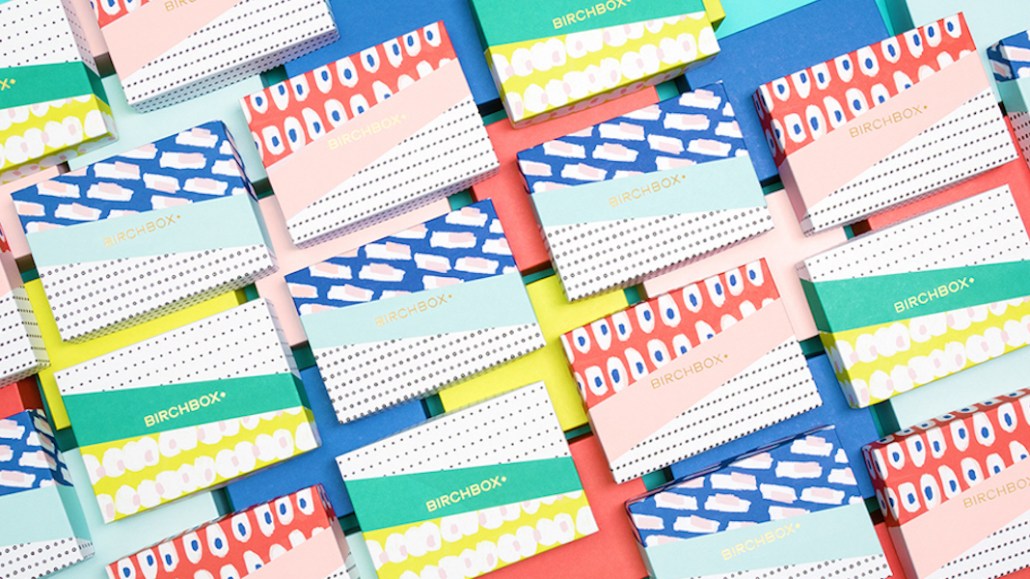
On September 14, Birchbox’s seventh anniversary, the beauty retailer and subscription company held its fourth annual Customer Appreciation Day, a tradition started in 2013 to drive brand awareness, traffic and sales. Forty team members from across departments were on deck in the first Birchbox social media “war room” to respond to commenters with personalized messages and offers.
According to Kima Cooper, Birchbox’s director of social content, the war room required months of prep, and employees were who don’t typically work in customer service were trained on brand voice, dos and don’ts, and how to handle difficult questions.
“Our main goal this year was customization and personalization,” said Cooper. “It wasn’t just about questions or comments, but outreach whenever anyone mentioned Birchbox. We wanted to reach as many customers as possible over the course of the day, and respond with personalized offers based on what they’ve bought in the past or what type of messages they responded to.”
The war room resulted in a 211 percent increase of traffic to the site from social, and a 55 percent increase in social media-driven revenue, year over year. All in all, the team saw 225,000 social media engagements. On top of the social media outreach, the company hosted product giveaways on Facebook Live, sent personalized gifts to longstanding subscribers, and partnered with Lyft and Spotify for extra promotions.
“This year, we tried to think about how to reach more people on an individual basis. We’re constantly pushing ourselves to do more on that front,” said Amanda Tolleson, Birchbox’s CMO. “Personalization does a lot of heavy lifting in terms of driving intent to purchase, and we’re lucky that the entry point of our company is the subscription box: People give us a lot of information up front.”
On Customer Appreciation Day, revenue from Birchbox’s e-commerce site grew 35 percent past the expected target, and 10 percent over the same day last year, which fit the retailer’s goal of driving attention and sales to its e-commerce store. Right now, e-commerce represents 35 percent of Birchbox’s business. Founder Katia Beauchamp said that driving more sales on the site is an area of focus. There were also 60 percent more subscription box sign-ups than on an average day.

A photo from the war room
This year, stakes were arguably higher for the surge in revenue and traffic that came with the social media push. In 2016, 80 employees were laid off, and plans to open three brick-and-mortar stores (the company has two locations right now) were scrapped. It had yet to reach profitability. With an uncertain future, Birchbox accepted a $15 million round in venture funding that was perceived as a lifeline.
But after two record-breaking months for revenue in December 2016 and January of this year, Birchbox became profitable for the first time in April. In August, rumors started that the company was in talks with several retailers about a potential acquisition, Walmart being one of them.
“Subscription services are in a risky space. The market’s both not matured, and it’s gotten incredibly crowded,” said Cheryl Cheng, a VC partner at the firm BlueRun Ventures. “It’s not that the market has come and gone, but it’s no longer a viable standalone business.”
To push Birchbox as an e-commerce store to customers, the company is capitalizing on the amount of customer information and data it’s stored over the years. The 40-person war room was prepped on quickly finding and searching customer history to suggest products and offer personalized discount codes in real time, and a designer was on hand to create GIFs and images tailored to each person. The team also gave out loyalty points, rather than discounts, to raise awareness about the program and get them to sign up, with points awarded based on how long someone has been a subscriber.
On its e-commerce site, Birchbox has also avoided promotions as a general rule, in order to not get caught in a cyclical pattern of discounting. For the Customer Appreciation Day, discounts were targeted to customers where it was relevant, like offering to bundle a product into a gift basket, for instance.
Typically, according to Cooper, social media posts aren’t gauged by the amount of revenue they drive, but the amount of engagement they see. But after a big event like the Customer Appreciation Day activations on social media, the team has plans to use that engagement and give it legs: Cooper said that the plan is to retarget those who participated in the Facebook Live videos by watching or commenting, and pitch them on products and subscriptions.
“It’s amazing how much customers reach out to us, but it can be very overwhelming in our desire to reach back out to each person and I don’t think we’ve cracked the code on how to do that,” said Tolleson. “I think one of the lessons in this that it isn’t about trying to do this constantly, it’s about picking when to make a really big moment as a company and engage with customers. We’re making it a focused moment when you can really do a lot about it and gather the company around it and really engage with customers.”
More in Marketing

In Graphic Detail: Why YouTube is a genuine threat to Netflix
Digiday has charted exactly how YouTube is a real threat to Netflix, due to its dominance of watch time, user base and its ability to totally reshape viewing behaviors.

At Ebiquity, a new role signals marketing’s shift from metrics to meaning
Marketing has no shortage of data. Ebiquity is betting on judgement.

Lowe’s wants to do more with AI shopping in 2026
Mylow, a shopping assistant powered by ChatGPT that launched in March, is already driving double the conversion rate for online shoppers.









